TechnologyCounter provides genuine, unbiased real user reviews to help buyers make informed decisions. We may earn a referral fee when you purchase through our links, at no extra cost to you.
List of 15 Top Restaurant Management Software For Your Business
Showing 1 - 15 of 194 productsPetpooja is the Next-age restaurant software operating with 30,000 + restaurants in Pan India, UAE, and South Africa. A snappy, effective, and easy-to-understand Point-of-Sale (POS) framework, is actually what your restaurant needs...Read Petpooja Reviews
eZee BurrP! is a Restaurant POS software designed to simplify the core operations of various establishments, including restaurants, bars, lounges, fine dining restaurants, fast food chains, spas, cafes, and bakeries. Developed by eZee Technosys, a re...Read eZee BurrP! Reviews
Cozy POS is a software developed by Cozy Infosystems Private Limited, based in India. It offers a complete solution for managing retail stores across multiple locations, with the option for cloud-based back office and headquarters management. The so...Read Cozy POS Reviews
Desktop-based-Cloud POS System for Restaurants, Cafe, QSR, Bakery & Food Trucks.
We are Indias First Restaurant Technology Company offering a Fully Integrated Mobile App for managing Online Orders from Zomato, Swiggy, FoodPanda & UberEats in one Application with Restaurant POS, Inventory, CRM & Customer Loyalty...Read TMBill Reviews
Lightspeed Retail is a solution for all your business needs. This advanced software is designed to streamline your operations, boost productivity, and drive revenue growth. With its intuitive interface and robust features, Lightspeed Retail is the go...Read Lightspeed Retail Reviews
TouchBistro is a restaurant point-of-sale system that is designed to simplify and streamline the operations of food establishments. With its user-friendly interface and innovative features, TouchBistro empowers restaurants to efficiently manage their...Read TouchBistro Reviews
CAKE Point of Sale is a software designed to streamline the operations of your business. Our innovative platform offers a range of features that will enhance your customers experience, increase efficiency, and boost profits. With CAKE, managing your...Read CAKE Point of Sale Reviews
Clover is an innovative software designed to help businesses succeed. With its user-friendly interface features, Clover streamlines tasks and boosts efficiency. From managing inventory and tracking sales to creating reports and accepting payments, Cl...Read Clover Reviews
Flipdish is a online ordering platform revolutionizing the food industry. With a user-friendly interface and seamless integration for both businesses and customers, Flipdish simplifies the ordering process and enhances the dining experience. Discover...Read Flipdish Reviews
Toast POS is a solution for all your business needs. With its user-friendly interface features, Toast POS revolutionizes the way you run your restaurant. Say goodbye to long lines, messy orders, and confusing payments. Let Toast POS simplify your ope...Read Toast POS Reviews
Digirestro is a software solution that streamlines your digital record keeping process. Say goodbye to manual documentation and hello to organized is a data management. With Digirestro, you can easily store, access, and share any type of digital info...Read Digirestro Reviews
POSist is the best restaurant pos software that provides an end-to-end solution for all types of restaurants and food outlets such as integrated order-taking and billing, inventory control, CRM, and real-time reporting...Read POSist Reviews
HDRestaurant is a software designed to transform your restaurant management experience. With its user-friendly interface and powerful features, it streamlines operations, increases efficiency, and improves customer satisfaction. Say goodbye to the co...Read HDRestaurant Reviews
Looking for a Software to manage all the Activities of your Restaurant, then Eatlot Is the one stop destination for you. A Complete Cloud based Restaurant Management Software to take away all your restaurant related problems in just a Click in a Pock...Read Eatlot POS Reviews
Ciferons POS is a Desktop and Mobile billing software synced with cloud. An easy to use interface with start to finish mix which can work on the web/offline and gives smooth and all around requested insight to the restaurant...Read Ciferon Reviews
- What Is the Restaurant Management Software?
- List of Key Features to Look for in Restaurant Management Software
- Top Benefits of Restaurant Management Software in India
- Types of Restaurant Management Software for Different Sectors
- Who Uses the Restaurant Management Software in India?
- Factors To Consider Before Purchasing In Restaurant Management Software
- Restaurant Management Software Technology Trends
- Types of Buyers and Which Solution Fits Their Needs
The Buyer’s Guide For Restaurant Management Software
Restaurant Management Software is evolving in today's world as technology advances and the internet becomes more widely used. Billing, record keeping, and other chores are among the responsibilities of restaurant managers. These tasks may require additional time to perform. As a result, Restaurant Management Software is designed to mitigate the risks associated with restaurant management.
What Is the Restaurant Management Software?
Restaurant Management Software is a digital solution designed to streamline the operational, financial, and customer service aspects of running a restaurant, cafe, or similar food service establishment. It integrates functions such as Point of Sale (POS) transactions, inventory management, table and reservation management, employee scheduling, customer relationship management (CRM), and analytics into a single platform. Restaurant Management Software aims to improve efficiency, reduce manual errors, enhance customer satisfaction, and provide actionable business insights, helping restaurant owners and managers optimize their operations and grow their businesses.
List of Key Features to Look for in Restaurant Management Software
When selecting the best restaurant management software, it's crucial to consider features that align with your specific operational needs and goals.

Here are the top features to look for in restaurant management software:
1. Point of Sale (POS) System:
A user-friendly POS Software is fundamental for processing orders, payments, and managing sales transactions efficiently. Look for a POS that can handle multiple payment methods and integrate seamlessly with other systems.
2. Inventory Management:
Effective inventory management features help track stock levels in real time, alert you when supplies are low, and manage vendor orders. This can significantly reduce waste and ensure that you're always stocked with the necessary ingredients.
3. Table and Reservation Management:
Tools that manage table availability and reservations can optimize your seating arrangement and turnover rates, improving the customer experience and potentially increasing revenue.
4. Kitchen Display System (KDS):
A KDS improves communication between the front of the house and the kitchen, reducing errors and speeding up order preparation.
5. Customer Relationship Management (CRM):
CRM capabilities enable you to gather and analyze customer data, manage loyalty programs, and personalize marketing efforts to enhance customer retention and attract new patrons.
6. Employee Scheduling and Management:
Features for scheduling, time tracking, and managing employee performance can streamline operations and ensure that you have the right staffing levels to meet demand.
7. Reporting and Analytics:
Robust reporting tools that offer insights into sales trends, menu performance, and customer preferences are essential for making informed business decisions.
8. Online Ordering and Delivery Integration:
With the rise of takeaway and delivery services, having software that integrates online ordering and delivery management can expand your customer base and increase sales.
9. Multi-Location Support:
If you operate or plan to expand to multiple locations, look for a restaurant management system that can manage operations across all sites from a centralized platform.
10. Compliance and Security:
Ensure the software complies with industry regulations, such as data protection laws, and includes security features to protect financial transactions and customer information.
11. Ease of Use and Support:
The top restaurant management software should be intuitive for your staff to use, with minimal training required. Additionally, reliable customer support is crucial for addressing any issues that may arise.
Selecting the best restaurant software in India with these features can significantly enhance operational efficiency, improve customer satisfaction, and drive growth for your business. It's important to assess each option carefully and consider how well it aligns with your specific needs and budget.
Top Benefits of Restaurant Management Software in India
Implementing restaurant management software in India offers a wide array of benefits that can transform the way a restaurant operates, leading to increased efficiency, improved customer satisfaction, and enhanced profitability.
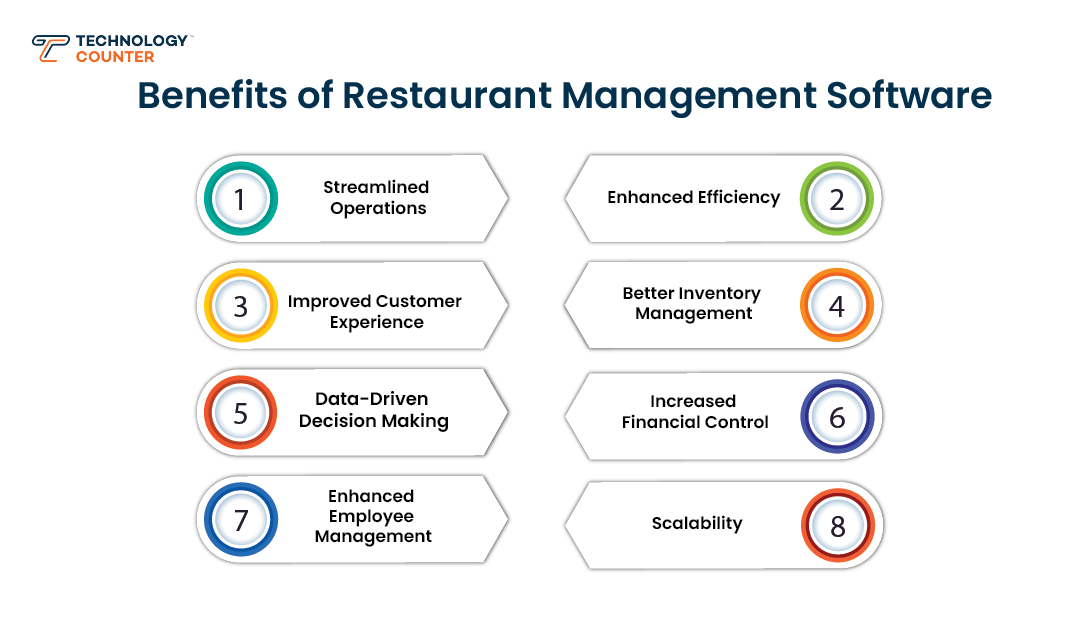
Here are the top benefits of utilizing the best restaurant management software in India:
-
Streamlined Operations:
By integrating various functions such as order taking, payment processing, inventory management, and employee scheduling into a single system, the restaurant management system streamlines operations, reducing manual tasks and minimizing the risk of errors.
-
Enhanced Efficiency:
Automation of routine tasks, such as order entry, stock level monitoring, and reservations management, speeds up service delivery, optimizes kitchen workflow, and ensures efficient use of resources.
-
Improved Customer Experience:
Features like table management, online reservations, and CRM allow restaurants to offer personalized service, reduce wait times, and enhance overall customer satisfaction. Online ordering and delivery integration also cater to the growing demand for convenience.
-
Better Inventory Management:
Real-time tracking of inventory levels and automatic reordering features help prevent stockouts and excess inventory, reducing waste and ensuring the availability of ingredients.
-
Data-Driven Decision Making:
Advanced reporting and analytics provide valuable insights into sales trends, menu performance, customer preferences, and operational efficiency, enabling informed decision-making and strategic planning.
-
Increased Financial Control:
With integrated accounting and financial reporting features, the restaurant system provides a clear picture of the restaurant's financial health, helps in budgeting, and monitors expenses and revenues for better financial control.
-
Enhanced Employee Management:
Scheduling, time tracking, and payroll integration simplify employee management, improve communication, and ensure compliance with labor laws, contributing to a more satisfied and productive workforce.
-
Scalability:
Cloud-based restaurant management software offers scalability, allowing restaurants to easily add new locations, update menus, and implement new features as the business grows.
-
Saves Time: Every minute counts in the fast-paced world of restaurant management software in India. The restaurant management solution is designed to significantly reduce manual work and automate key processes, from table reservations and order management to inventory tracking and employee scheduling. This automation not only minimizes the chances of human error but also frees up your staff to focus on providing the best possible customer service.
-
Compliance and Security:
Compliance with payment and data protection regulations is simplified through secure payment processing and data encryption, protecting customer information and reducing the risk of data breaches.
-
Competitive Advantage:
By leveraging technology to optimize operations and deliver exceptional customer service, restaurants can differentiate themselves in a competitive market, attracting more customers and fostering loyalty.
Incorporating restaurant management software in India into daily operations can lead to significant improvements across all aspects of a restaurant's performance, from front-end service to back-end management, ultimately driving success and growth in the highly competitive food service industry.
Types of Restaurant Management Software for Different Sectors
Each type of restaurant management software is designed to address specific challenges and optimize the operational efficiency of the respective sector, ensuring businesses can provide excellent service, manage resources effectively, and achieve their financial goals.
When selecting software, restaurant software owners and managers need to consider their specific sector's needs and choose a solution that aligns with their business model and operational requirements.
Here are the types of restaurant management software tailored for different sectors within the industry:
1. Full-Service Restaurants (FSR): FSRs, including fine dining and casual dining establishments, require comprehensive software with advanced reservation systems, table management, order management, and customer relationship management (CRM) to enhance the dining experience and streamline operations.
2. Quick Service Restaurants (QSR) and Fast Food: These establishments prioritize speed and efficiency. Their management software focuses on fast order processing, efficient kitchen display systems, inventory management for high-volume items, and integration with delivery platforms.
3. Cafes and Coffee Shops: Software for cafes often includes features for managing smaller inventories, quick order and payment processing, loyalty programs, and options for small-scale table or seat management.
4. Bars and Nightclubs: These venues require software with strong inventory management features for tracking liquor and beverage stocks, age verification integrations, tab management, and sales analytics to monitor peak times and popular items.
5. Bakeries and Pastry Shops: The restaurant management system for bakeries focuses on inventory management for ingredients, product shelf life tracking, order management for custom orders, and sales tracking for both walk-in and online orders.
6. Food Trucks: Mobility is key for food trucks, so their management software often emphasizes mobile POS systems, inventory tracking suited for limited storage spaces, and quick payment processing. Integration with location-based services can also be beneficial.
7. Catering Services: Catering software includes features for event management, custom menu planning, client management, staffing, and equipment inventory management, catering to the needs of off-site food preparation and service.
8. Ghost Kitchens and Virtual Restaurants: These operations focus on delivery and takeout without a physical dining space, requiring software with strong online food ordering systems, delivery management, and kitchen operation efficiency.
Who Uses the Restaurant Management Software in India?
Restaurant management software India is used by a broad spectrum of individuals and entities within the food service industry to streamline operations, enhance efficiency, and improve customer service.
The primary users of restaurant management software in India include:
-
Restaurant Owners: Owners use the software to oversee all aspects of their business, from financial reporting and inventory management to customer satisfaction and employee performance, to ensure profitability and growth.
-
Restaurant Managers: Managers rely on the software for day-to-day operational tasks such as scheduling staff, managing reservations, tracking inventory levels, and generating sales reports to keep the restaurant running smoothly.
-
Chefs and Kitchen Staff: Kitchen staff use features like kitchen display systems (KDS) for efficient order processing and inventory management tools to keep track of ingredients and supplies needed for menu items.
-
Waitstaff and Front-of-House Employees: Restaurant management systems in India functionalities allow the waitstaff to place orders, process payments, and manage tables efficiently, enhancing the customer dining experience.
-
Bar Managers and Bartenders: In establishments with a focus on beverages, such as bars and nightclubs, the software helps manage inventory of liquor and other beverages, track sales, and manage tabs and payments.
-
Catering Managers: For businesses that offer catering services, the software assists in event planning, customer management, menu customization, and logistics to ensure successful event execution.
-
Food Truck Owners: Owners utilize mobile POS systems and inventory management features tailored to the unique needs of mobile operations, including sales tracking and route planning.
-
Accountants and Financial Analysts: They use the software for tracking financial transactions, and payroll, and generating detailed reports for budgeting, forecasting, and financial analysis.
-
Marketing Professionals: CRM and marketing tools within the software enable targeted marketing campaigns, loyalty programs, and customer feedback collection to drive sales and improve customer engagement.
-
IT Specialists: In larger establishments or chains, IT specialists might be involved in managing the software’s integration with other systems, ensuring data security, and customizing the software to fit the business’s specific needs.
The best restaurant management software in India serves a wide range of users within the food service industry, from small cafes to large chain restaurants, providing the tools and insights necessary for efficient operation and business success.
Factors To Consider Before Purchasing In Restaurant Management Software
When purchasing the best restaurant management software, it's essential to consider several factors to ensure you select a solution that aligns with your business needs and contributes to your establishment's success. Here are critical factors to keep in mind:
1. Compatibility with Business Model: Ensure the software suits your specific type of restaurant, whether it's a quick-service restaurant (QSR), fine dining, casual dining, café, or a specialized service like a food truck or bakery. The software should address the unique challenges and requirements of your business model.
2. Essential Features and Functionalities: Identify the core features you need, such as point of sale (POS) functionality, inventory management, customer relationship management (CRM), table reservation and management, kitchen display systems, and online ordering capabilities. The chosen software should offer comprehensive functionalities that streamline operations and enhance customer service.
3. Ease of Use: The software should be intuitive and user-friendly, requiring minimal training for your staff. An easy-to-navigate interface can significantly reduce errors and improve operational efficiency.
4. Integration with Existing Systems: Look for software that can easily integrate with other tools and systems you already use, such as accounting software, payment gateways, and third-party delivery apps. Integration capabilities can facilitate smoother operations and better data management.
5. Scalability: Consider the software's ability to grow with your business. It should be flexible enough to accommodate new locations, menu changes, and increased transaction volumes without significant disruptions or additional food costs.
6. Cost and Return on Investment: Evaluate the pricing structure, including any upfront costs, monthly or annual subscription fees, and charges for updates or additional features. Consider the software's return on investment (ROI) by assessing how its features can reduce costs, increase efficiency, and boost revenue.
7. Customer Support and Service: Reliable customer support is crucial, especially during the initial setup phase and beyond. Ensure the vendor offers adequate training, onboarding assistance, and ongoing support services.
8. Security and Compliance: The software should comply with industry standards and regulations, including data security and privacy laws. Payment processing should be secure, and the system should protect sensitive customer and business data.
9. Technical Requirements: Understand the technical requirements for the software, including hardware needs, operating system compatibility, and internet connectivity requirements. This ensures that the software will perform optimally within your existing infrastructure.
10. Vendor Reputation and Reviews: Research the software provider's reputation, customer feedback, and reviews. Look for testimonials or case studies from businesses like yours to gauge the software's effectiveness and reliability.
11. Demo or Trial Version: Before committing, request a demo or a trial period to test the software in your operational environment. This hands-on experience can help you assess whether the software meets your needs and is a good fit for your team.
12. Updates and Maintenance: Inquire about how the software is updated and maintained. Regular updates are essential for security, adding new features, and ensuring compatibility with evolving technology and industry standards.
By carefully considering these factors, you can make an informed decision when purchasing restaurant management software, ensuring it meets your operational needs, supports your business goals, and delivers value over the long term.
Restaurant Management Software Technology Trends
The restaurant management software industry is continually evolving, with new technologies and trends shaping the way restaurants operate and engage with customers. Staying abreast of these trends is crucial for restaurant owners and managers looking to enhance efficiency, improve customer experiences, and stay competitive.
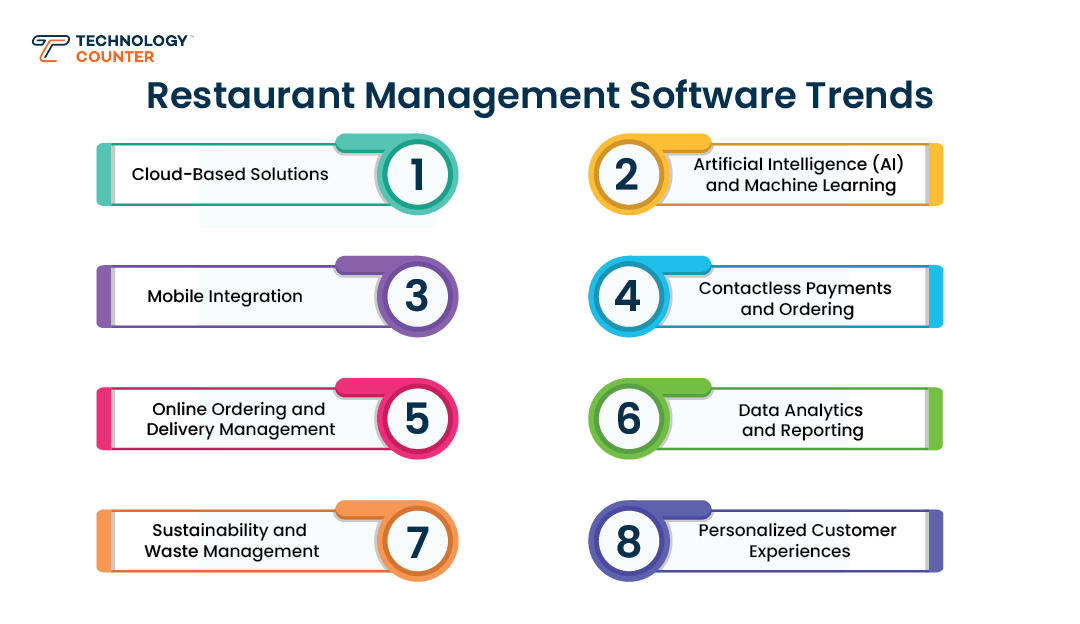
Here are some of the key technology trends in restaurant management software:
-
Cloud-Based Solutions: Cloud computing has become increasingly popular, offering restaurants scalable, flexible, and cost-effective software solutions. Cloud-based restaurant management systems allow for real-time data access from anywhere, facilitating remote management and seamless integration with other online restaurant management systems.
-
Artificial Intelligence (AI) and Machine Learning: AI and machine learning technologies are being incorporated into restaurant software to offer predictive analytics, personalized customer experiences, and intelligent automation. This includes AI-driven chatbots for customer service, machine learning for inventory forecasting, and AI for personalized marketing campaigns.
-
Mobile Integration: The proliferation of smartphones has led to a surge in mobile app integration for both customers and restaurant staff. Mobile apps enable online ordering, reservations, and payments for customers, while staff can use mobile devices for table management, order taking, and payment processing.
-
Contactless Payments and Ordering: Accelerated by the COVID-19 pandemic, contactless payments and ordering have become the norm. Restaurants are adopting software that supports QR code scanning, NFC technology, and mobile payments to provide safer, faster, and more convenient payment options.
-
Online Ordering and Delivery Management: With the rise of food delivery services, integration with third-party delivery platforms and in-house delivery management software are becoming essential features. These integrations help restaurants expand their reach, streamline the delivery process, and improve customer satisfaction.
-
Data Analytics and Reporting: Advanced data analytics tools are becoming more integrated into restaurant management software, providing insights into customer behavior, sales trends, and operational efficiency. These analytics help restaurants make data-driven decisions to optimize menus, staffing, and marketing strategies.
-
Sustainability and Waste Management: As sustainability becomes a growing concern, restaurant management systems are incorporating features to help reduce waste, manage inventory more efficiently, and track sustainability metrics. This includes tools for monitoring food waste, optimizing ingredient usage, and managing supply chains more sustainably.
-
Personalized Customer Experiences: Software solutions are increasingly leveraging customer data to offer personalized dining experiences. This includes tailored marketing messages, customized menu recommendations, and loyalty programs that cater to individual preferences and behaviors.
-
Voice Technology and Virtual Assistants: Voice-activated technology is being used for hands-free operations, such as taking customer orders and controlling kitchen equipment. This technology enhances efficiency and reduces the likelihood of errors.
-
Blockchain for Supply Chain Transparency: Some restaurant management systems are exploring blockchain technology to enhance supply chain transparency and traceability. This can help ensure food safety, authenticate product origins, and build trust with consumers.
By embracing these technological trends, restaurants can improve their operational efficiency, meet changing customer expectations, and navigate the challenges of the highly competitive food service industry.
Types of Buyers and Which Solution Fits Their Needs
In the realm of restaurant management software, buyers come from diverse segments of the food service industry, each with unique needs and challenges. Understanding the types of buyers and the solutions that best fit their needs is crucial for selecting the best restaurant software india.
Here are common types of buyers and the solutions tailored to their requirements:
1. Independent Restaurants and Small Chains
-
Needs: Ease of use, affordability, basic POS features, inventory management, and customer management.
-
Solution: Integrated restaurant software that offers a comprehensive suite of services, including POS, inventory, and CRM functionalities, designed for small-scale operations. Cloud-based solutions are particularly suitable for their flexibility and lower upfront costs.
2. Full-Service Restaurants (FSRs)
-
Needs: Advanced table and reservation management, kitchen order management, detailed reporting, and customer relationship management to enhance the dining experience.
-
Solution: Robust, full-featured restaurant management software that includes sophisticated table management, reservation systems, and customer analytics to provide personalized service and efficiently manage front and back-of-house operations.
3. Quick Service Restaurants (QSRs) and Fast Food
-
Needs: Fast and efficient order processing, inventory control, and integration with online ordering and delivery platforms.
-
Solution: High-speed POS systems with easy menu customization, real-time inventory tracking, and integration capabilities with third-party delivery services to cater to the fast-paced environment of QSRs.
4. Bars and Nightclubs
-
Needs: Liquor inventory management, age verification, tab management, and high-volume transaction processing.
-
Solution: Restaurant POS systems specialized for bar operations, with features for managing tabs, processing rapid transactions, and tracking detailed inventory for various types of beverages.
5. Cafes and Bakeries
-
Needs: Product management for perishable items, quick service POS features, and loyalty program management.
-
Solution: Solutions that offer product rotation management, fast checkout processes, and customer loyalty tools tailored to the high turnover and repeat customer base typical of cafes and bakeries.
6. Food Trucks
-
Needs: Mobility, simplified menu management, and location-based services.
-
Solution: Mobile POS systems that are lightweight and easy to use, with features for quick service, location tracking, and integration with mobile payment options.
7. Catering Services
-
Needs: Event planning tools, customer and order management, and inventory tracking for events.
-
Solution: Catering-specific management software that includes features for event scheduling, custom menu creation, client management, and logistics planning.
8. Franchises and Multi-Location Chains
-
Needs: Centralized management, consistent data reporting across locations, and scalable solutions.
-
Solution: Enterprise-level restaurant management systems that offer multi-location support, centralized control over menus and pricing, and comprehensive analytics for performance benchmarking across all sites.
Choosing the right restaurant management software requires a clear understanding of your specific business model, operational needs, and growth objectives. By matching these needs with the appropriate software solutions, buyers can optimize their operations, enhance customer satisfaction, and achieve their business goals more effectively.
Find Out How Restaurant Management Software Can Help Your Business
Seeking more information about restaurant management software? Explore these essential resources to gain valuable insights and make informed decisions:

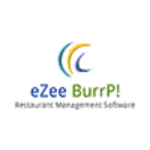
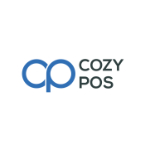

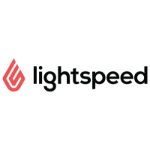

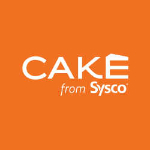



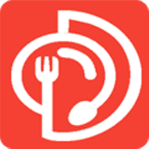
.png)
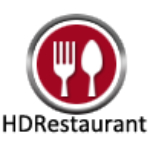
.png)

